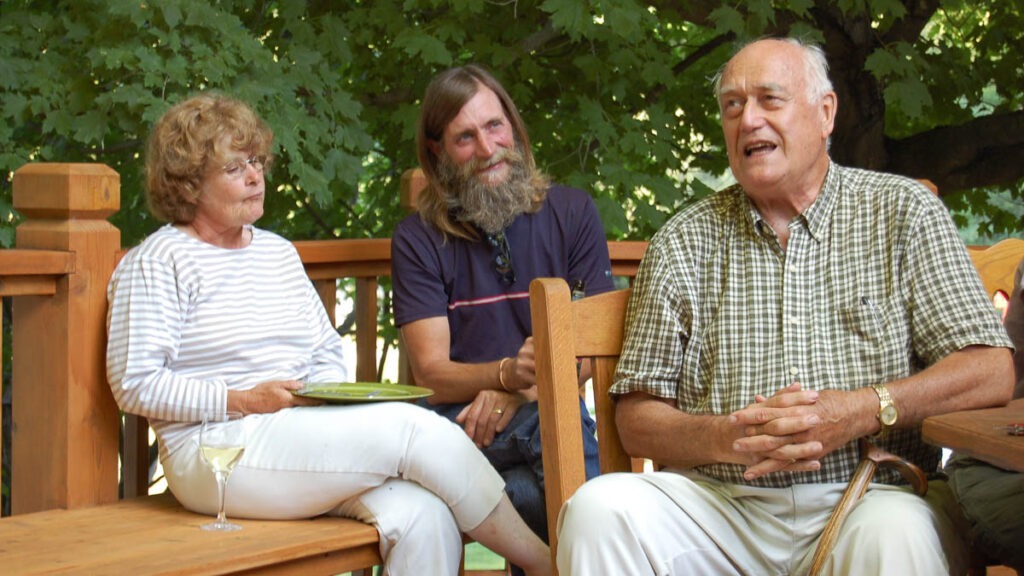More to Explore
Growing Guide: Garlic

Grow and Save Garlic Seeds
Hardneck vs. Softneck
Hardneck garlic varieties tend to form fewer cloves per bulb than softneck varieties, but those cloves are often a bit larger. Hardneck garlic grows better in colder climates because it requires prolonged exposure to cold weather of at least 40 days at 40 degrees Fahrenheit or less. This process is called vernalization.
Many hardneck varieties fall into two types: Porcelain and Purple Stripe.
Porcelain garlic typically has bulbs with thick, bright-white skin. Bulbs have at least four cloves that are bold in flavor when raw or cooked. Porcelain garlic is cold-tolerant and stores for about eight months.
Purple Stripe garlics include glazed purple-stripe, marbled purple-stripe, and standard purple-stripe subgroups. Off-white bulbs have some degree of purple striping and deep-purple to red clove wrappers. This garlic type excels when baked or roasted.
Other types of hardneck garlic include Rocambole, Marble Purple Stripe, Glazed Purple Stripe, Asiatic, Turban, and Creole.
Softneck garlic varieties excel in milder climates, growing better in environments with warmer winters because they do not require cold exposure to make bulbs (whereas hardneck garlics do). They also mature more quickly than hardneck varieties, don’t form scapes, and generally contain several small cloves per bulb.
How to Grow Garlic
This culinary staple is rarely propagated from seeds. Instead, a few aromatic bulbs of garlic are saved from the harvest and replanted the following year.
Time of Planting
Plant garlic in the fall, usually between September 15 and November 30, after the first light frost of the year.
Spacing Requirements
Keep bulbs intact until right before planting. Break bulbs into individual cloves and plant the largest, healthiest looking cloves with the basal plate—the point where the cloves attached to the bulb—down and the pointed shoot-end up, 6-8 inches apart. Cover with 2 inches of soil and a 6-inch layer of mulch.
Time to Germination
Cloves may begin to sprout through the mulch in 4-8 weeks, depending on the variety and the weather conditions in your region. Do not be concerned. The plants may suffer some frost or a light freeze and still survive the weather.
Special Considerations
Garlic plants must be vernalized (overwintered) in order for their bulbs to develop. Do not remove mulch in the spring; it helps control weeds, preserve moisture, and provide nutrients as it decomposes.
When garlic shoots begin to emerge in early spring, ensure even soil moisture by supplying 1 inch of water per week throughout the growing season. Garlic does not compete well with weeds, so keep weeds under control early to ensure a bountiful harvest.
Scapes are the curly flower stems that often form as the garlic matures. Cut or break scapes off after they are 10 inches long and reserve them for eating.
Common Pests and Diseases
Garlic can suffer damage from nematodes, botrytis rot, and white rot. However, the biggest threat to garlic is weeds. Keep your garlic bed clean and make sure to plant garlic in well-fertilized, loose soil.
When and How to Harvest for Food Consumption
Harvest after 3 or 4 leaves have died back and there are still 5 or 6 green leaves remaining on the plant—sometime in June or July, depending on the year and your climate. Do not wait too long or the bulbs will begin to separate in the ground.
Loosen the soil with a shovel or pitchfork and then dig the garlic carefully. Do not pull the stalk or it will separate from the bulb. Gently brush most of the dirt off.
Tie plants in a bundle of 6-8 plants and hang in a shaded, dry, well-ventilated shed or garage. Leave plants hanging for 4-6 weeks so that bulbs can cure.
Eating
Garlic is a good complement to many dishes, and is often used in stir-fries and Italian dishes.
Storing
After thoroughly drying, trim off the roots and cut the stalks off about 1 ½ inches from the bulb. Store in net bags. For optimum storage, hang in an area with 45-55 percent humidity and a temperature of 50-70 degrees F. Hold back your nicest bulbs for replanting.
How to Save Garlic
Garlic is vegetatively propagated rather than grown from seeds. To regrow garlic, keep bulbs intact until no more than 1-2 days before replanting, then simply pull apart garlic bulbs and plant individual cloves as described above. Some garlic varieties will produce seeds if scapes are not removed from the plants, but these seeds will not be true to type.
Prepping and Planting Garlic (Video)
In this video, Seed Savers Exchange staff walk you through prepping and planting garlic. Originally produced for the Resilience Garden video series in 2020.
Garlic Steward—John Swenson

For more than 40 years, John listed a total of 133 different varieties in the Yearbook (the annual print version of The Exchange), and donated 150 varieties to Seed Savers Exchange’s seed bank collection. He had acted as an advisor to Seed Savers Exchange for several years. Read more here about how John became passionate about this culinary staple.